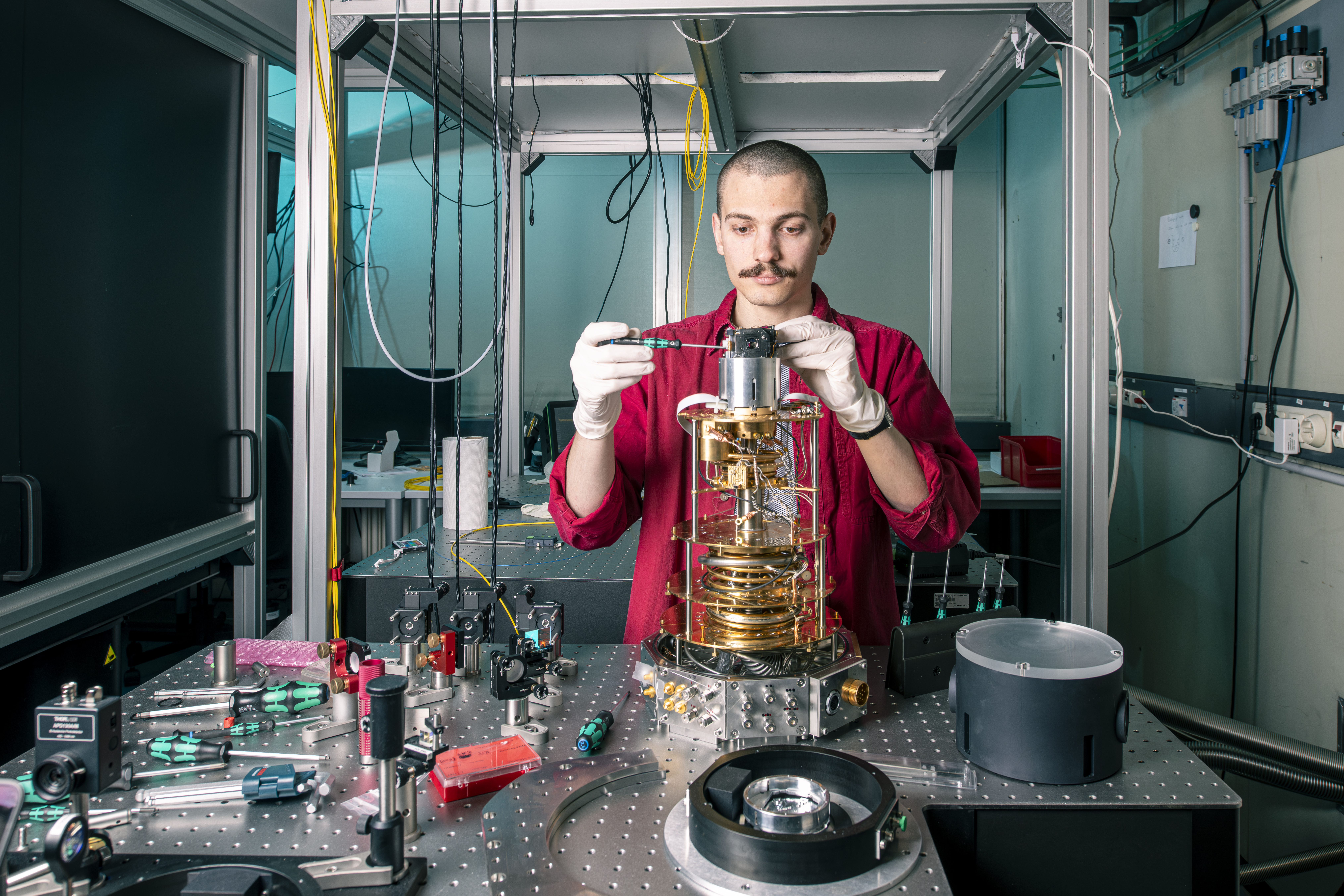Quantum networks are a key technology for secure communication and for Europe’s digital sovereignty. Researchers at the Karlsruhe Institute of Technology (KIT), working with European partners, are establishing an important basis for quantum networks by connecting a superconducting quantum computer with a spin-based quantum memory. Their work marks a crucial step forward for high-performance quantum technologies. The project received funding from the European Innovation Council’s Pathfinder program.
The development of quantum technologies has made major progress in recent decades. In particular, research is focused on quantum computers, with experts expecting breakthroughs in pharmaceutical development, materials science, and cryptography. But quantum computers can reach their full potential only when they can be connected with other quantum components. “Today many quantum systems are working independently of one another,” says Professor David Hunger of the Physikalisches Institut at KIT. “In the Superspin project, we’re developing technology that will enable a reliable connection between a quantum computer and quantum memory. And that’s the first step towards the future when we’ll be linking quantum computers, implementing distributed quantum computing, and building a quantum internet.”
How It Works
Connecting the two quantum systems means they need to exchange information in the form of qubits, the basic units of information in any quantum system. To transmit data, the qubits are converted into photons (basic units of light), “flying qubits” that can propagate rapidly and almost losslessly through optical fibers.
To transmit quantum states over long distances, researchers make use of the phenomenon called quantum entanglement in which two particles are brought into a common state and behave as a single system. A change in one of the particles directly affects the other, regardless of their separation. The result is a connection that enables the reliable transmission of quantum states from one system to another.
Transmission in optical fibers
The actual implementation is a technical challenge, as the two quantum systems are based on different physical principles and work at different frequencies. Since superconducting qubits work in the microwave range while diamond-based quantum memory stores information in spin states and is addressed using light in the visible spectrum, the scientists are developing special quantum transducers for the project. The transducers convert the fragile quantum states into individual photons whose wavelengths are then adjusted so that they can be transmitted also through long-distance optical fibers.
The researchers at KIT are developing a quantum memory made of special diamond defects that combine excellentoptical and spin properties. The memory will be compatible with one of the two transducers so that the converted photons can be stored efficiently and retrieved when needed. “The goal of our project is to connect these completely different physical systems and create entanglement between a superconducting qubit and a spin-based quantum memory,” Hunger says. “Not only would that be a major technical breakthrough, it would also be an important step towards modular and scalable quantum technologies.”
The Superspin Project and the Pathfinder Program
With its Pathfinder program, the European Innovation Council (EIC) supports visionary ideas for revolutionary technologies. The program has total funding of over 140 million euros, and Superspin is among 44 projects receiving support. KIT researchers are cooperating with partners from Aalto University in Finland; Palacký University Olomouc in the Czech Republic; and QphoX, a start-up based in the Netherlands.
In close partnership with society, KIT develops solutions for urgent challenges – from climate change, energy transition and sustainable use of natural resources to artificial intelligence, sovereignty and an aging population. As The University in the Helmholtz Association, KIT unites scientific excellence from insight to application-driven research under one roof – and is thus in a unique position to drive this transformation. As a University of Excellence, KIT offers its more than 10,000 employees and 22,800 students outstanding opportunities to shape a sustainable and resilient future. KIT – Science for Impact.


 Superspin
Superspin